2015
> Curated by / Myriam Ben Salah, Like The Deserts Miss The Real, Sarah Abu Abdallah, Abdullah Al Mutairi, Marwa Arsanios , Gcc, Raja’a Khalid
> Larbi Cherkaoui
> Julius Deutschbauer Klaus Pobitzer / Habs-Burgerstand, Ein Prä-Resümee
> Ilse Haider / le circuit heroesque
> Matthias Herrmann / On Photography
> Verortungen / Alyce Aycock, Peter Hopkins, Tania Kitchell, Ken Lum, Paul Morrison , Georges Rousse, Michaela Spiegel, Clemens Wolf
> Gudrun Kampl / Value Love Word Cell
> Curated by / Peter Stastny / Good NIght, Mister Procrustes / Francis Alÿs, Zipora Fried, Jim Shaw, Katrin Sigurdardottir, Kiki Smith, Jana Sterbak, Jeanne Susplugas
2014
> Olga Georgieva / Invisible Beijing
> Papier / Alan Davie, Günther Förg, Oswald Oberhuber, Tony Oursler, Peter Weibel
> Over Again Forever / Sébastien de Ganay
> Michaela Spiegel / Standbilder
> Emmanuel Régent / Pendant qu´il fait encore jour
2013
> Curated by Caroline Smulders / Bertrand Lavier
> Clemens Wolf / Untitled, Die Theatralik der Bedeutungslosigkeit
> Go to references / Ilse Haider
> Julius Deutschbauer / Möbel, Topfenflanzen, Urlaubsreisen
Olga Georgevia / Unverschämt Unwiderstehlich
2012
2012 Tony Oursler Cumuliform
> SESSHAFT Groupshow
2011
Psyche Michaela Spiegel
Recycled News II Jaroslaw Kozlowski
Holes'n Grids Clemens Wolf
Les Choses de la Vie
Märchen Mythos Marotte
CURATED BY _VIENNA 2013
WHY PAINTING NOW ?
PAINTING ACCORDING TO LAVIER
curated by Caroline Smulders
10.10. - 15.11.2013
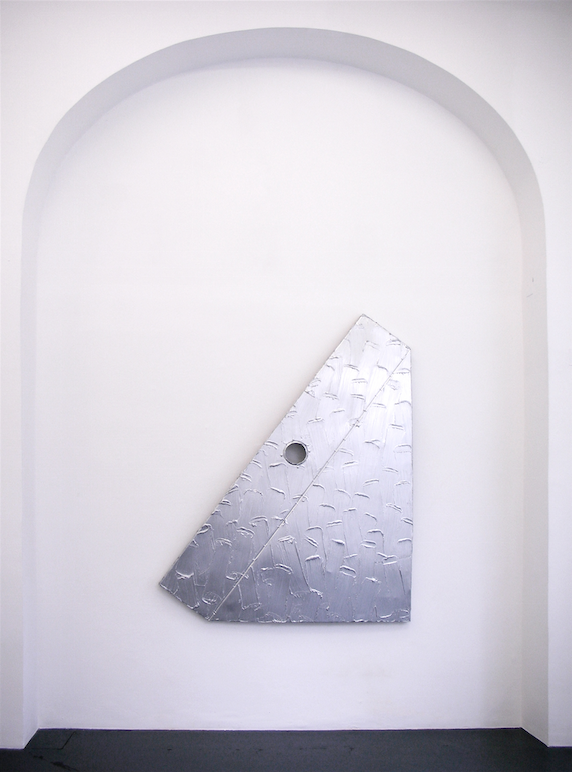
Bertrand Lavier, „Atomium“, detail n 15, 2007, acrylic on aluminium, 158 x 305 x 15 cm
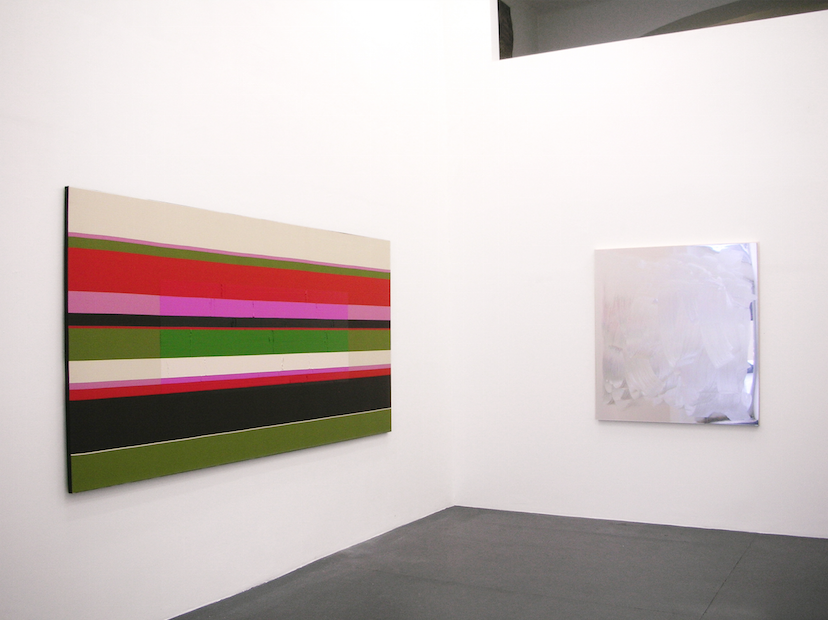
Vue de l´exposition „Bertrand Lavier“ curated by Caroline Smulders, Galerie Steinek, Octobre-Novembre 2013
de gauche à droite : „Iseo“, 2004, Peinture acrylique sur tissu d'ameublement, 145 x 300 cm / „Rozana“, 2013, Peinture acrylique sur dibond, 145 x 125 cm
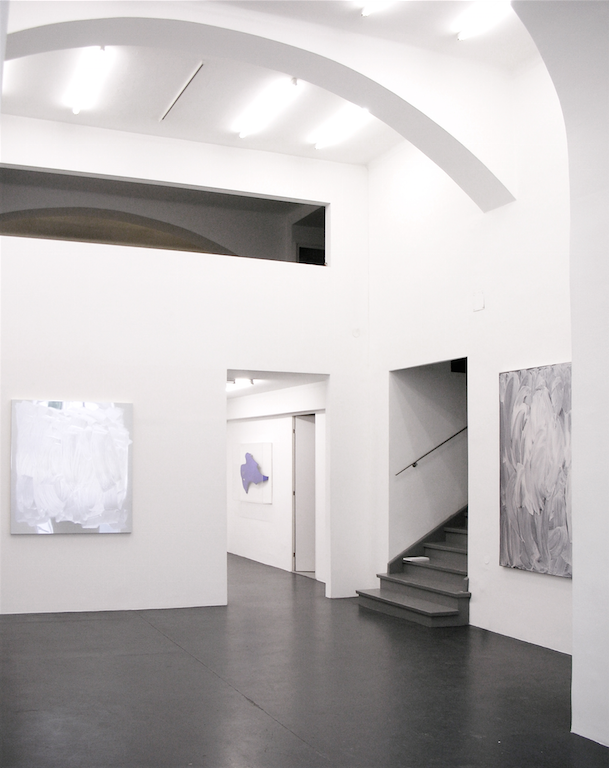
Vue de l´exposition „Bertrand Lavier“ curated by Caroline Smulders, Galerie Steinek, Octobre-Novembre 2013
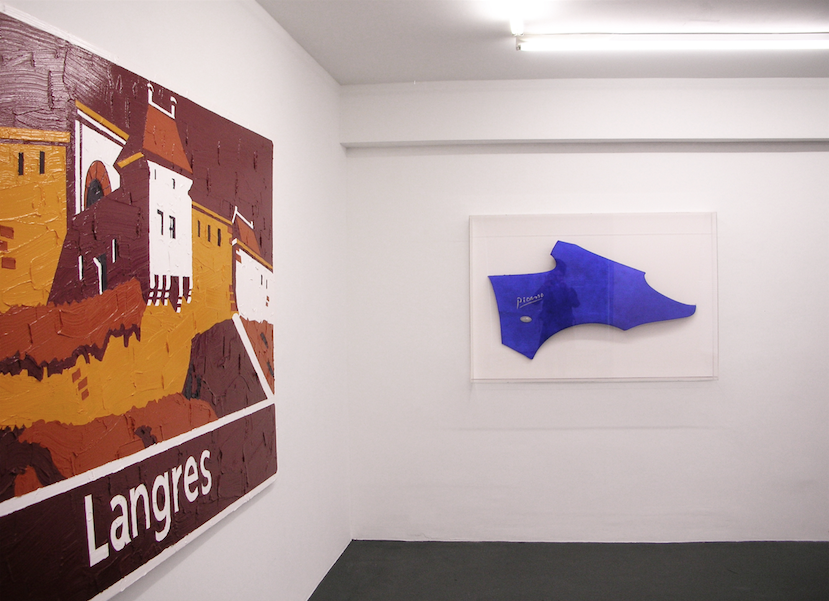
Vue de l´exposition „Bertrand Lavier“ curated by Caroline Smulders, Galerie Steinek, Octobre-Novembre 2013
de gauche à droite : „Langres“, 2012, Peinture acrylique sur panneau autoroutier, 160 x 240 cm / „Picasso Outremer“, 2008, Peinture acrylique sur aile d'automobile dans une boite en plexiglas, 91 x 135 x 16 cm
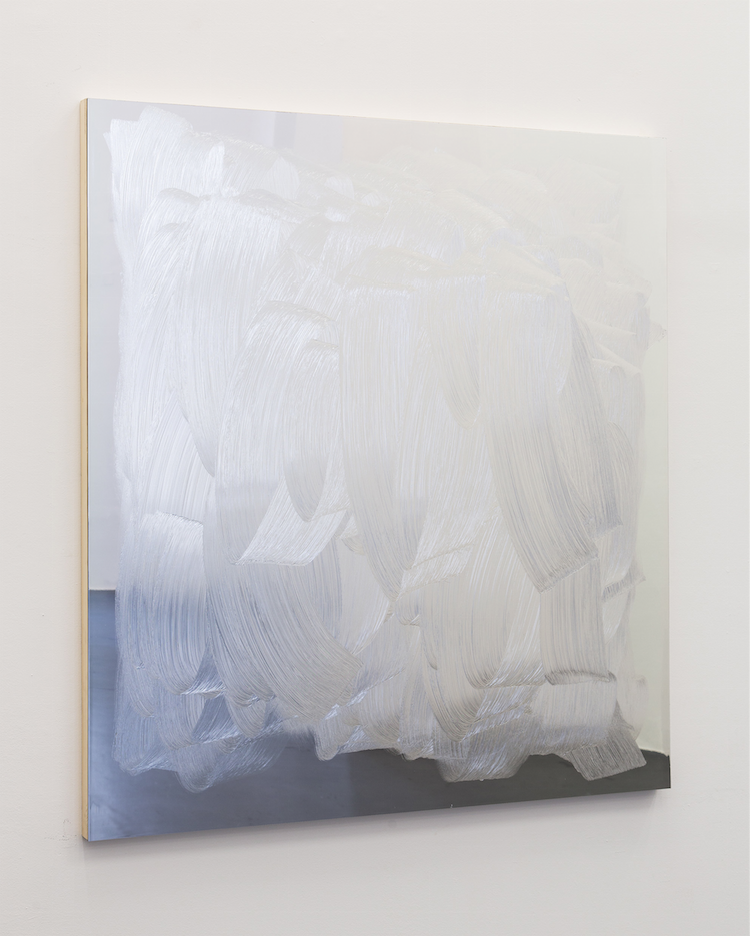
Vue de l´exposition „Bertrand Lavier“ curated by Caroline Smulders, Galerie Steinek, Octobre-Novembre 2013 / „Rozana“, 2013, Peinture acrylique sur dibond, 145 x 125 cm
PAINTING ACCORDING TO LAVIER
curated by Caroline Smulders
When Sylvia Steinek invited me to reflect on the question at the heart of the exhibition Why Painting Now?, Bertrand Lavier immediately came to mind. His work answers the challenge of painting today, addressing it in the most complex, original, inventive, and unexpected ways.
I would like to thank him for having accepted the invitation to participate in Why Painting Now ? And also for the real pleasure derived from exploring his work in a detailed and concentrated way. Using large paintbrush strokes and respecting the colors of the original object, Bertran Lavier has been painting all sorts of “things” over the last thirty years. Objects of widely varying dimensions –radio, drill, fan, alarm clock, refrigerator, cupboard, automobile fender, mirror, ping-pong table, and even a sailboat (Argo, the largest object he has ever painted)— are captured by Lavier and expressed through artistic painting. From the most banal to the most precious, in this painting process the original objects lose their initial function: Lavier doesnʼt hesitate to assume possession of a precious Steinway piano, using it as a motif in his work, covering it with paint and turning it into what can only be described as an object of painting itself.
In my view, the outermost limits to this approach were attained when Lavier even decided to paint directly onto a painting by one of his contemporaries, François Morellet. Appropriating a piece by Morellet and covering it with paint that identically matches the abstraction and conceptual impulse of the original work, thanks to his famous “a la van Gogh” touch, Lavier makes the original canvas invisible, even as he magnifies its scope. He liberates himself from the rule which demands that a work of art speaks for its time, even while paying homage to the artist and finally transforming the object into a kind of painting icon, a figurative representation of the original abstract concept. Among my favorite works, a series of mirrors which Lavier began in the 1980s, even abandons the pretext of the painterly motif. Lavier is happy to evoke a mirror, itself denied its function by the painter, a constraint imposed by the artist himself, because the mirror can no longer serve as a reflecting glass. Once again, painting is forced to “reflect” on itself.
Thanks to these different, very elaborate, and often contradictory games that Lavier inflicts on his painted creations, he succeeds in going beyond the simple idea of “the concept” and elevates painting to its rank as a universal art, from now on itself encompassing all the other classical techniques of representation: from sculpture to photography and further along the whole gamut of images from still shots to video.
Thanks to Lavier, painting has all the qualities and magic of a musical score in which the notes might sometimes echo an aria from an opera, sometimes a piece of jazz, a rock rhythm, or electroacoustic sound. It is dizzying to consider, for the work of this painter embraces all the modern movements which have been at its core from the start, but which have also eluded it until now. Yet we are there: this is a Lavier we are looking at right now.
Caroline Smulders